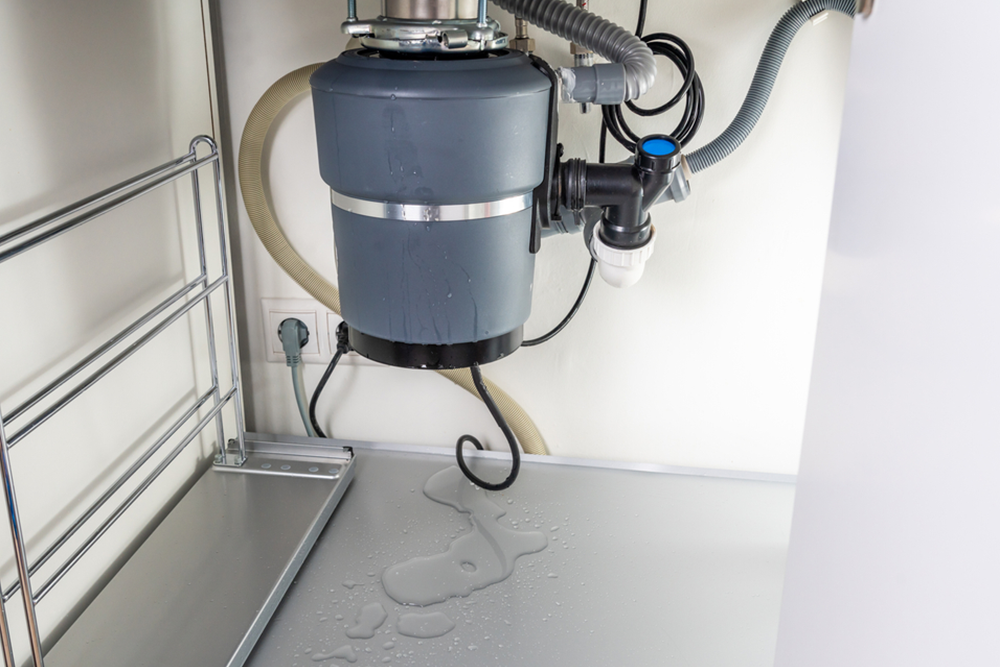The Guide to Resolving a Leak in Your Garbage Disposal
The Guide to Resolving a Leak in Your Garbage Disposal
Blog Article
What are your opinions regarding The Handy Guide To Fixing Your Garbage Disposal Leaking?

Waste disposal unit are important kitchen area devices that help in taking care of food waste successfully. Nevertheless, a leaking waste disposal unit can be a frustrating and untidy trouble to deal with. Luckily, many leakages can be fixed quickly with a couple of simple steps. In this post, we will talk about just how to repair a leaking waste disposal unit properly.
Intro
Garbage disposals are set up under kitchen area sinks and are created to shred food waste into smaller pieces, enabling it to go through the pipes system quickly. While these devices are normally dependable, leakages can occur in time due to damage, loosened connections, or damage to the unit.
Typical Root Causes Of Leakages in Waste Disposals
Worn Seals and Gaskets
Seals and gaskets play an important function in stopping water from leaking out of the garbage disposal. With time, these parts can degrade, bring about leakages around the disposal system.
Loose Connections
The connections in between the garbage disposal and the plumbing system can come to be loose over time, creating water to leakage out during operation.
Splits or Openings in the Disposal Unit
Physical damage to the waste disposal unit, such as fractures or openings in the real estate, can also cause leaks.
Recognizing the Resource of the Leak
Prior to attempting to deal with a leaking waste disposal unit, it is necessary to identify the resource of the leakage. This can typically be done through visual evaluation or by performing easy examinations.
Visual Examination
Examine the waste disposal unit unit very carefully for any kind of signs of water leak. Pay attention to areas around seals, gaskets, and connection points.
Examining for Leakages
One way to evaluate for leaks is by running water through the disposal unit and checking for any kind of noticeable indicators of leak.
Tools and Products Needed for Taking Care Of a Dripping Waste Disposal Unit
Prior to beginning the repair service process, gather the necessary devices and materials, including a screwdriver, adjustable wrench, plumbing professional's putty, substitute seals or gaskets, and epoxy or patching product for repairing cracks or holes.
Step-by-Step Overview to Fixing a Dripping Waste Disposal Unit
Turn Off the Power
Before trying any kind of repair work, make certain that the power to the garbage disposal device is switched off to stop the threat of electrical shock.
Situate the Leakage
Recognize the specific area of the leak and figure out the cause.
Tighten Connections
Utilize a wrench to tighten up any type of loosened links between the disposal unit and the plumbing system.
Replace Seals or Gaskets
If the leak results from used seals or gaskets, get rid of the old components and replace them with new ones.
Patching Splits or Openings
For cracks or openings in the disposal system, usage epoxy or an appropriate patching material to secure the damaged location.
Checking the Waste Disposal Unit After Fixing
As soon as the repair service is full, check the garbage disposal by running water through it to ensure that the leakage has been solved.
Preventive Upkeep Tips to Prevent Future Leaks
To avoid future leaks, it is necessary to execute normal upkeep on your waste disposal unit. This consists of maintaining it tidy, staying clear of placing non-food things or difficult objects down the disposal, and periodically checking for leakages or various other problems.
Conclusion
To conclude, dealing with a leaking waste disposal unit is a reasonably simple process that can be completed with standard devices and products. By adhering to the actions laid out in this article and practicing precautionary upkeep, you can maintain your waste disposal unit in good working problem and avoid costly repair services in the future.
HERE’S HOW TO FIX YOUR GARBAGE DISPOSAL
WHAT TO DO IF SOMETHING IS STUCK IN YOUR GARBAGE DISPOSAL
If the impeller won’t turn, there’s probably something stuck in the disposal. It could be a steak bone or peach pit, although plumbers report pulling all sorts of inappropriate objects out of disposals, such as bottle caps or aluminum foil. Make sure power to the disposal is off, and look inside to see if you can see the source of the jam.
Never stick your fingers in a disposal. Pull out anything you see with tongs or pliers.
If the disposal still won’t work, it may be time to call a plumber or consider buying a new disposal. GEM Plumbing & Heating is here for all of your garbage disposal needs.
WHAT TO DO IF YOUR GARBAGE DISPOSAL DRAIN IS CLOGGED
Take everything out from underneath your sink and put a bucket or other container under your disposal to catch any water that drains out. Disconnect your disposal from the power supply. If it’s plugged into a wall outlet, unplug it. If it’s hardwired into an electrical box, go to the electrical panel and turn off the breaker for the disposal. Pour ¼ cup of baking soda into the drain, followed by ½ cup of white vinegar. Give the solution a few minutes to fizz and do its work. Look into the disposal with a flashlight to see if you can see an object that might be causing the clog. If you see it, remove it using tongs or pliers. MORE TIPS ON DEALING WITH A CLOGGED GARBAGE DISPOSAL
Never use drain cleaner in a garbage disposal. It can damage the plastic parts inside the disposal. You can also be splashed with the caustic liquid while working to clear the clog. Beware! Never stick your fingers into a garbage disposal. Trust us — not a good idea. In many instances, your dishwasher drains through your garbage disposal. This allows the disposal to grind any large food particles that may be drained out of your dishwasher. There are some jurisdictions, however, where the plumbing code prohibits such a connection. WHAT TO DO WHEN YOUR DISHWASHER DRAINS THROUGH THE DISPOSAL
Run some water in the sink so your plunger has at least a ½-inch of water to create a seal and plunge vigorously up and down several times. You may need to repeat this several times. Run hot water down the drain to clear any residue that remains.

I stumbled upon that article about Why Is while browsing the internet. Are you aware of someone else who is serious about the topic? Please feel free to promote it. Kudos for your time. Visit us again soon.
Call Today Report this page